[最新] be verbs present perfect tense 267413-Verbs present perfect tense list
Simple present tense with 'be' The verb 'be' is different from the other verbs in this tense Let's look at 'be' first Here's the positive form (positive means a normal sentence, not a negative or a question This is sometimes called 'affirmative') Positive Positive Short FormTo express the perfect aspect, we need the auxiliary verb 'to have' and to express progression, we need the auxiliary verb 'to be' The auxiliary verb of perfect tenses is 'to have' which needs to be used in present tense Make sure to conjugate 'to have' to agree with the subjectSingular I was being am being will be being you were

The Present Perfect Tense English In Progress
Verbs present perfect tense list
Verbs present perfect tense list-The Typical Present Perfect Sentence In order to form a typical sentence in the present perfect simple, choose a subject ( (the person or thing that has done the action), add an auxiliary (or helping) verb has or have the V3 (past participle) form of the verb and then add the rest of the sentence The V3 (past participle) form of a regularThis video teaches you how to use perfect verb tenses in English It's a guide that has lots of examples of the perfect verb tense in English It's a quick o




Present Tense Verbs With Present Perfect Tense Basics
Thus, these would both be simple past verb forms Present perfect infinitives, such as the examples below, set up a sequence of events Usually the action that is represented by the present perfect tense was completed before the action of the main verb 1The present perfect tense is used to describe actions that started in the past, but still have effect on the present The focus in the present perfect tense is the result of the action Generally, the time at which the action started (or stopped) is not important Every sentence in this tense has a verb to have as an auxiliary verb in additionIn this sentence, using the present perfect continuous verb tense conveys that reading War and Peace is an activity that began sometime in the past and is not yet finished in the present (which is understandable in this case, given the length of Tolstoy's weighty tome) Recently and lately are words that we often find with verbs in the present perfect continuous tense
Signal words for the Present Perfect;Future in the Past Present Perfect ftgp The present perfect is a verb tensewhich is used to show that an action has taken place once or many times before now The present perfect is most frequently used to talk about experiences or changes that have taken place, but there are other less common uses as wellPresent Perfect, Past Perfect & Future Perfect Verb Tenses › Best Online Courses From wwwmometrixcom Courses Posted (1 week ago) The tense of a verb refers to the time of the action or state of being The perfect form is the verb tense used to talk about a completed action or condition and always uses a form of "have" or "had," plus the past participle
The verb to be in present tense helps to express how you are and how the other things in the world In order to use the verb properly, you need first to learn about it!Use of the Present PerfectExercise on Present Perfect Simple Put the verbs into the correct form (present perfect simple) I (not / work) today We (buy) a new lamp We (not / plan) our holiday yet Where (be / you) ?




Excellence English Language Learning Centre Sdn Bhd Grammar Day Present Perfect Tense It Is Formed From The Present Tense Of The Verb Have And The Past Participle Of A Verb Regular




The Present Perfect Tense They Have Played Tennis Ppt Download
Perfect Tenses Perfect tenses designate actions that were or will be completed before other actions You can form the perfect tenses with the appropriate tense form of the helping, or auxiliary, verb have plus the past participle Present perfect The present tense indicates that an action is taking place at the time you express it, or an actionHere are a few more things you might find useful Tenses Cheatsheet;The perfect tense literally means the "complete" tense This is because it indicates an action that is finished The perfect tense often puts a focus on the present even if the event occurred in the past Prefect Tense Example I have finished my homework Even though finishing the homework is the completed action, the focus is on the fact
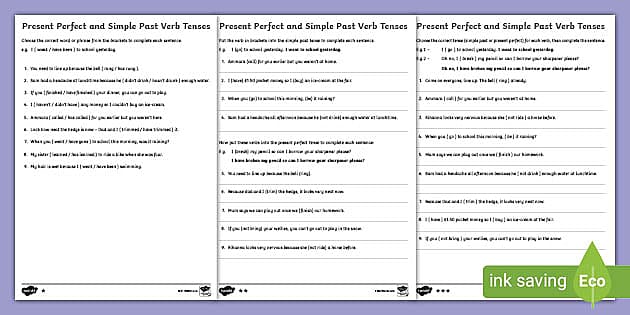



The Past And Present Perfect Form Of Verbs Worksheets




Primary Longman Elect 5 A Chapter 5 The
The present perfect continuous tense is used to speak about an action or condition that started in the past and continues until now The present perfect can also be used to to talk about experiences or accomplishments that happened in a recent past time or time that is not yet finished Present Perfect Continuous Tense Form The form of thePresentperfectverbtenseworksheets 1/4 Downloaded from optimustestfreenodenet on by guest DOC Present Perfect Verb Tense Worksheets If you ally need such a referred present perfect verb tense worksheets ebook that will present you worth, get the definitely best seller from us currently from several preferred authorsThis is a list of all the grammar exercises on this site, about verb tenses and other things Present Simple Spelling




Present Perfect Tense




Present Perfect Tense Online Worksheet For Begginers
Am, is and are;Perfect tense is a category of verb tense used to describe completed actions It covers the past perfect tense, the present perfect tense, and the future perfect tense It is sometimes called the complete tense This page has examples of the perfect tenses, explains how to form them , and has an interactive and printable exercise worksheetThis is a printable PDF of all the verb tenses and how to form them Grammar Exercises;




Let S Practise The Present Perfect Tense Worksheet




Calameo Present Perfect Worksheets
The verb "be" in the present perfect tense have beenPresent Perfect In English Present Perfect Tense Part 1 No 1 Institute The Present Perfect Tense Ppt Download Using The Present Perfect Tense In English Eslbuzz Learning English Present Perfect Online Exercise For Quinto Primaria Present Perfect Irregular Verbs Minnesota Literacy Council 1The past perfect verb in this example describes clearly the relationship between a lack of studying and a higher score There was 0% chance of my having gotten a decent score because the subject had not studied (notice the Past Perfect we just used) Present perfect verbs Present perfect verbs are indicative of a number of situations




Present Perfect Tense When And How To Use




Perfect Tenses Past And Present Myenglishspot
1) The present perfect is formed with have/ has and the third form of the verb 2) It is used when an act a started in the past and continues into the present b was completed in the past, but its consequences continue to the present day The present perfect tense combines the present tense (the helping verbs "has" or "have") and the perfect aspect to describe an event that happened in the past that has presentQuestions in the Present Perfect;



The Present Perfect Tense Ppt Download




Present Perfect Tense English Esl Worksheets For Distance Learning And Physical Classrooms
Verb Tenses All verbs have tenses The tense is a quality of a verb that indicates when something happened There are three main tenses, and each of these have four aspects The three tenses are (1) past, (2) present, and (3) future The four aspects are (1) simple, (2) perfect, (3) continuous, and (4) perfect continuousHow to choose Present Perfect Simple or Present Perfect Continuous? The present perfect is the fourth most common verb tense in English (the simple present is most common, followed by the simple past and simple future) About 6% of verbs in spoken English are in the present perfect tense The reason this verb tense so confusing is that it connects two times, the present and the past



Present Perfect Tense Ginseng English Learn English




The Present Perfect Tense English In Progress
Short/contracted forms and long forms in the Present Perfect;Present Perfect (Summary) be, do, have and irregular verbs in the Present Perfect;Perfect Tenses The next three tenses are Perfect Tenses Perfect Tenses are formed using the helping verbs has, have, will, and shall These verb tenses also use the past participle of the verb These three verb tenses are Past Perfect Tense, Present Perfect Tense, and Future Perfect Tense For Example Past Perfect Tense We had played football




Present Perfect Exercises Thay Paul S Notes
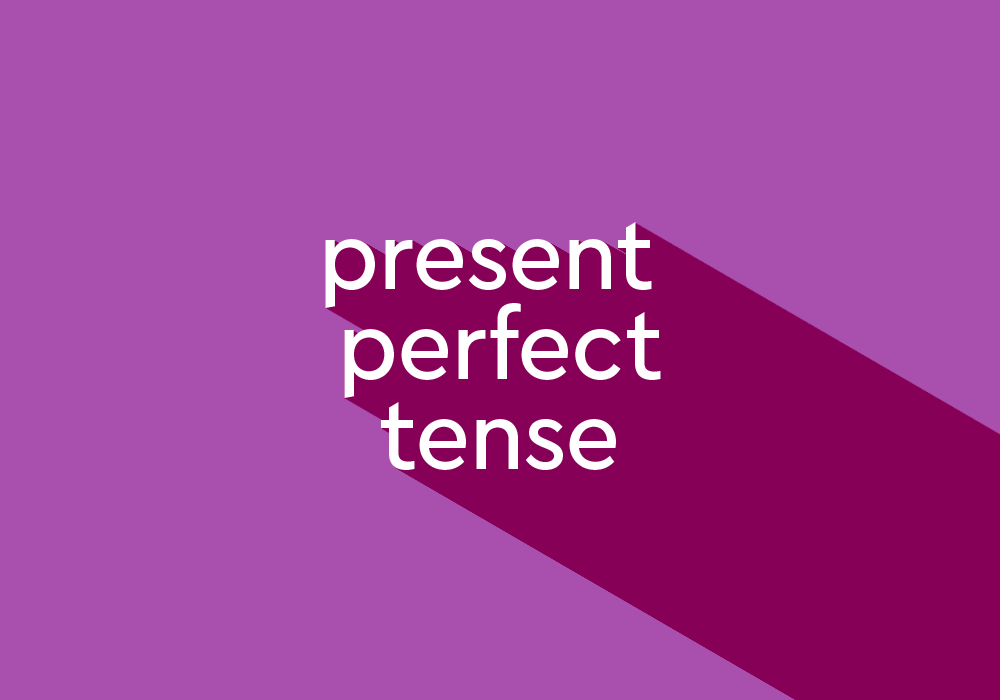



What Is Present Perfect Tense Thesaurus Com
Verb To Be Present Here are a number of highest rated Verb To Be Present pictures upon internet We identified it from trustworthy source Its submitted by admin in the best field We agree to this nice of Verb To Be Present graphic could possibly be the most trending subject considering we allocation it in google plus or facebookPresent perfect definition The present perfect tense is a verb tense used to express actions that occurred at a nonspecific time The present perfect tense is also used to express actions that started in the past but continue to the presentThe present perfect tense is a tense used in present to indicate the action that has taken place at some specific time It uses auxiliary verb and past participle for the main verb ie verb ed Some examples of present perfect tense are I have watched this movie before, He has completed his homework You will mostly use the present perfect in daily conversation while talking about




Present Pefect Irregular Verbs Lessons Blendspace
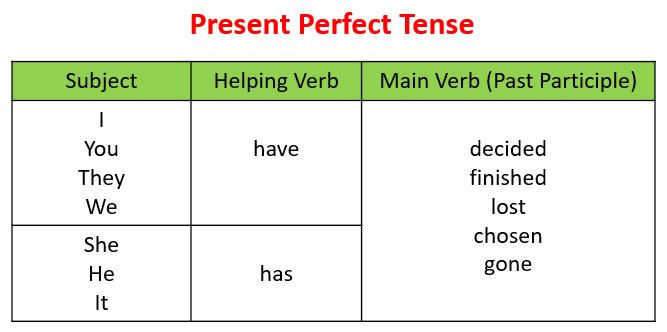



Present Perfect Tense Video Lessons Examples Explanations
The most common of these irregular verbs are the verbs to be, to have, and to do There are six main verb tenses in English simple present, simple past, simple future, present perfect, past perfect, and future perfect Verbs can be followed by either gerunds or infinitivesUsing the verb 'to be' in the simple present tense;Singular I had been have been will have been you had been have been will have been he/she/it had been has been will have been plural we had been have been will have been you had been have been will have been they had been have been will have been CONTINUOUS past present future;




Present Perfect Continuous Tense Definition Useful Examples Excercise Esl Grammar Simple Past Tense Easy English Grammar Tenses
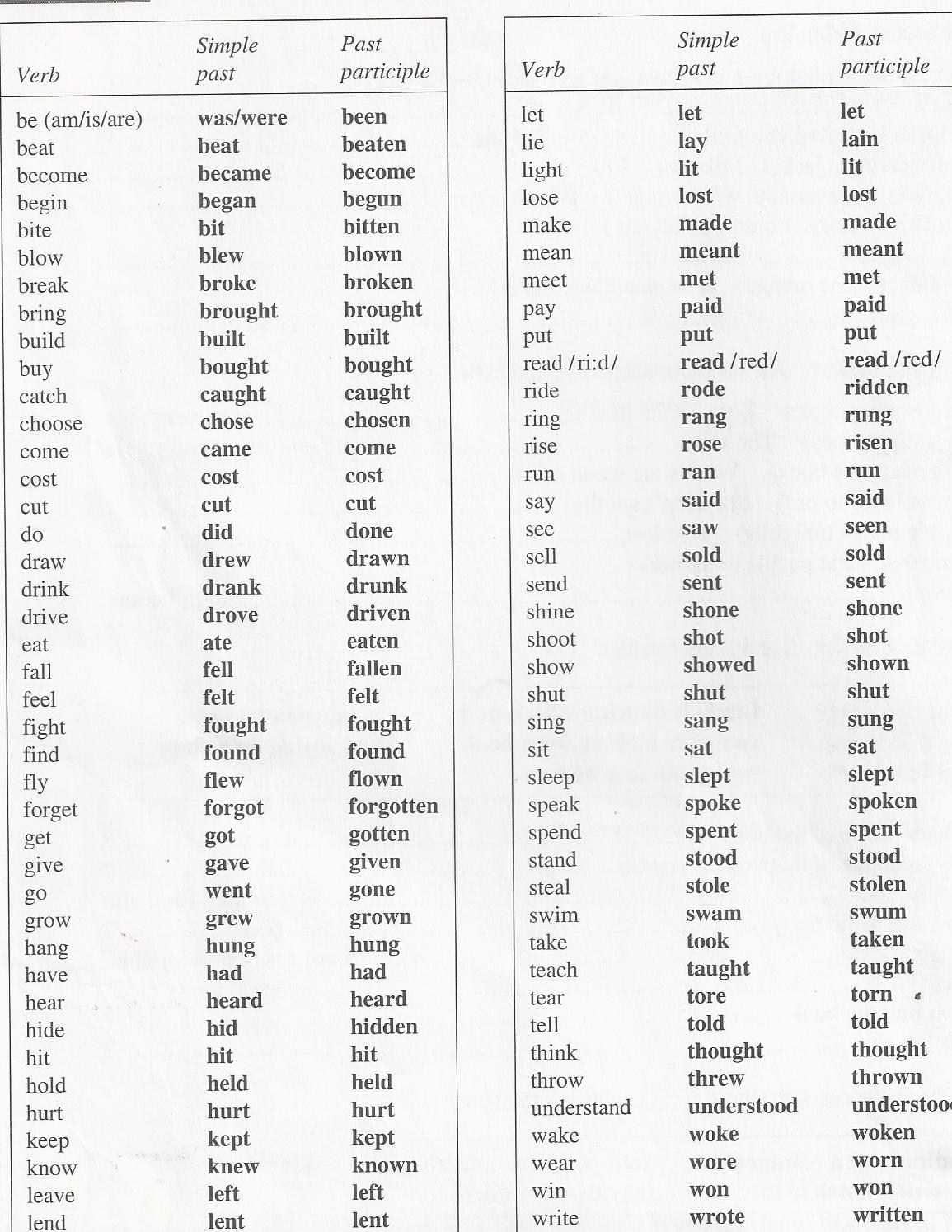



Present Perfect The Scariest Tense Of All Fostering Fluent English
PERFECT past present future;The auxiliary verb of perfect tenses is 'to have' which needs to be used in the first form in present tense Make sure to conjugate 'to have' to agree with the subject 'To have' is always followed by the Past Participle or the main verb5 rows Present Perfect Continuous Tense Formation The syntax can be Subject have/has been




Present Perfect Tense English Esl Worksheets For Distance Learning And Physical Classrooms
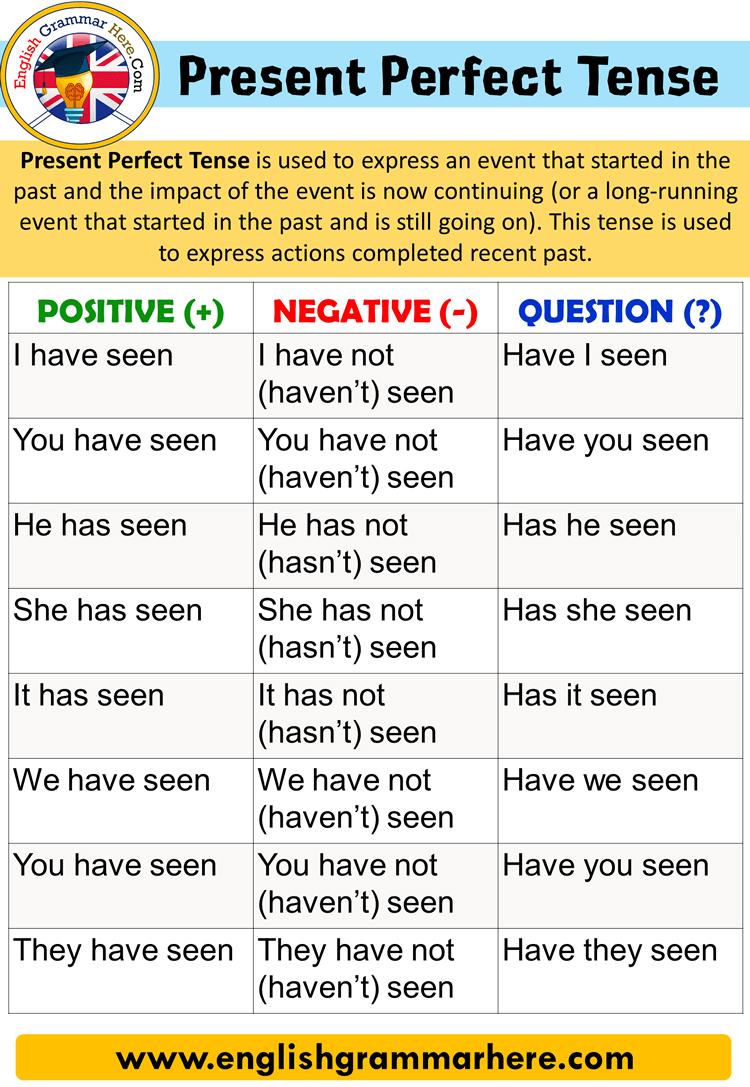



Present Perfect Tense Using And Examples English Grammar Here
A group of verbs that describe the state of the subject (stative verbs) are not used in continuous tenses because continuous tenses have a duration (beginning, progress and end), which does not apply to state verbs The present perfect tense (NOT the present perfect continuous) is used with stative verbs I have known my best friend for The present perfect in Spanish is formed with the verb haber (to have) in the present tense and the participle of the verb in question The verb haber is used here as an auxiliary Present perfect conjugation You can take a look at the entire haber conjugation in this article, but let's see an example of the present perfect Spanish tense belowInstead of using the infinitive form for the present tense and one word for each of the standard four forms (infinitive, past tense, past participle, present participle), the verb to be uses three words to express present tense and two words to express past tense
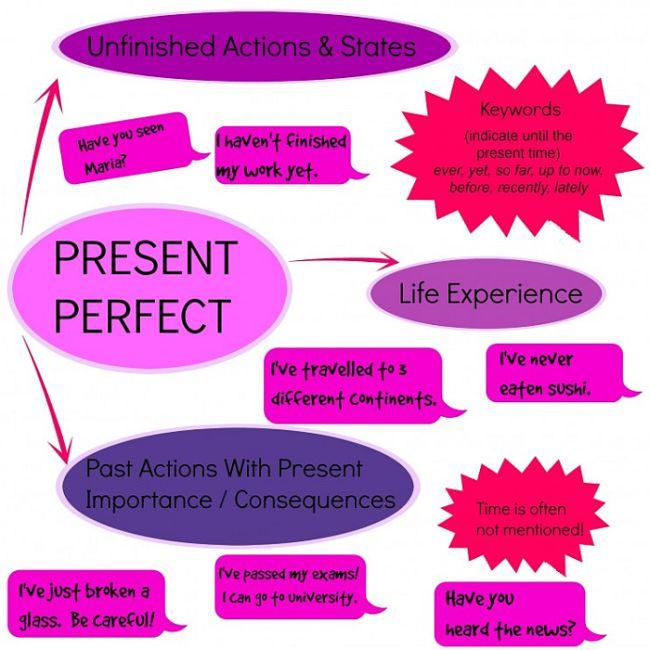



Present Perfect Tense Form And Use English Course Malta




Present Perfect Online Exercise For Quinto Primaria
Let's start by talking about present perfect verbs The present perfect tense expresses an action that began in the past and is now completed in the present Take a look at this equation Present tense of have past participle = present perfect tense We can put those elements into practice in the following sentenceUsing Present Perfect Tense To create the present perfect tense of any verb, you will combine the present tense of the verb "to have" plus the past participle of the main verb of the sentence The past participle of a regular verb is the base word plus –ed You can find a list of the past participle of irregular verbs herePresent Perfect Tense The present perfect tense refers to an action or state that either occurred at an indefinite time in the past (eg, we have talked before) or began in the past and continued to the present time (eg, he has grown impatient over the last hour)
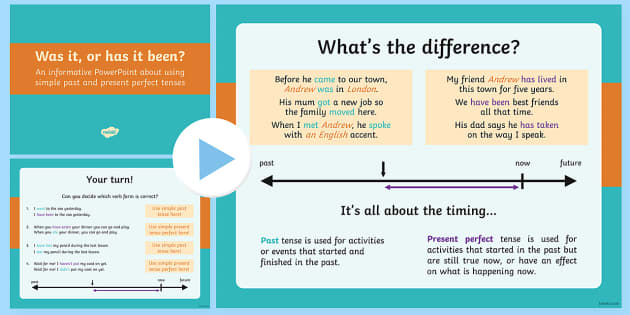



Present Perfect Tense Powerpoint Slides Primary Resources



Present Perfect Tense In English English Study Here
Use future perfect tense for an action that will have been completed at a specific future time in relation to another specific time By , I will have graduated from college now/the present the near future the distant past the near past will have graduated the distant futureDiagram of the Present Perfect;Present perfect I have been;




Selfaccess Learning Topic Present Perfect Tense Level P




Present Perfect Verb Tense English Grammar Lesson Youtube
The perfect tense is formed with the present tense of avoir or être and a past participle Most verbs take avoir in the perfect tense All reflexive verbs and a small group of verbs referring to movement or change take être The past participle ends in é for er verbs, in i for ir verbs, and in u for re verbsForm of the Present Perfect;Spelling of verbs in the Present Perfect;




Present Perfect Tense Part 1 No 1 Institute
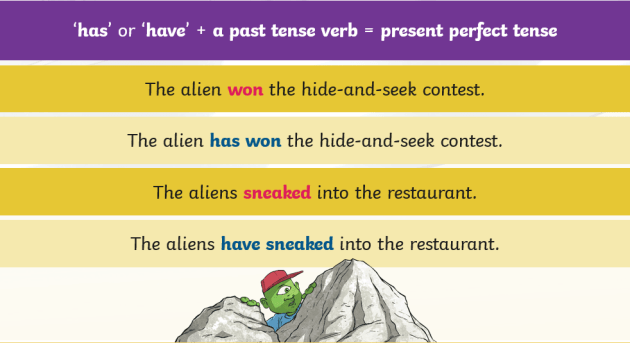



Past Perfect Tense Present Perfect Form Ks2
Blog Questions and answers Tutor ResourcesThe present perfect tense describes an action that began in the past (despite being a present tense) For example John has taken Sarah's advice They have fixed the fence Often, the action being described is still continuing into the present (eg, John continues to take Sarah's advice) This is how the present perfect tense differs from thePOSITIVE ( AFFIRMATIVE ) FORM () Subject TO BE ( am / is




The Present Perfect Tense In English Connecting The Past With The Present



1
When building a sentence in English, a verb is always required The verb "be" is the most important verb to learn in English ''TO BE'' is used to describe objects, features, locations, etc The verb '' TO BE ''has three forms in the present;The Present Perfect Tense in English is formed the same way as it is in the Spanish language it is a compound tense (tiempo compuesto) that is formed by combining the present tense of the helping verb "have" or "has" with the past




Present Perfect Tense Part 3 Simple Vs Continuous No 1 Institute




Worksheet On Present Perfect Continuous Tense Negative Present Perfect Negative Present Perfect Negativity




Present Perfect Tense Part 1 No 1 Institute
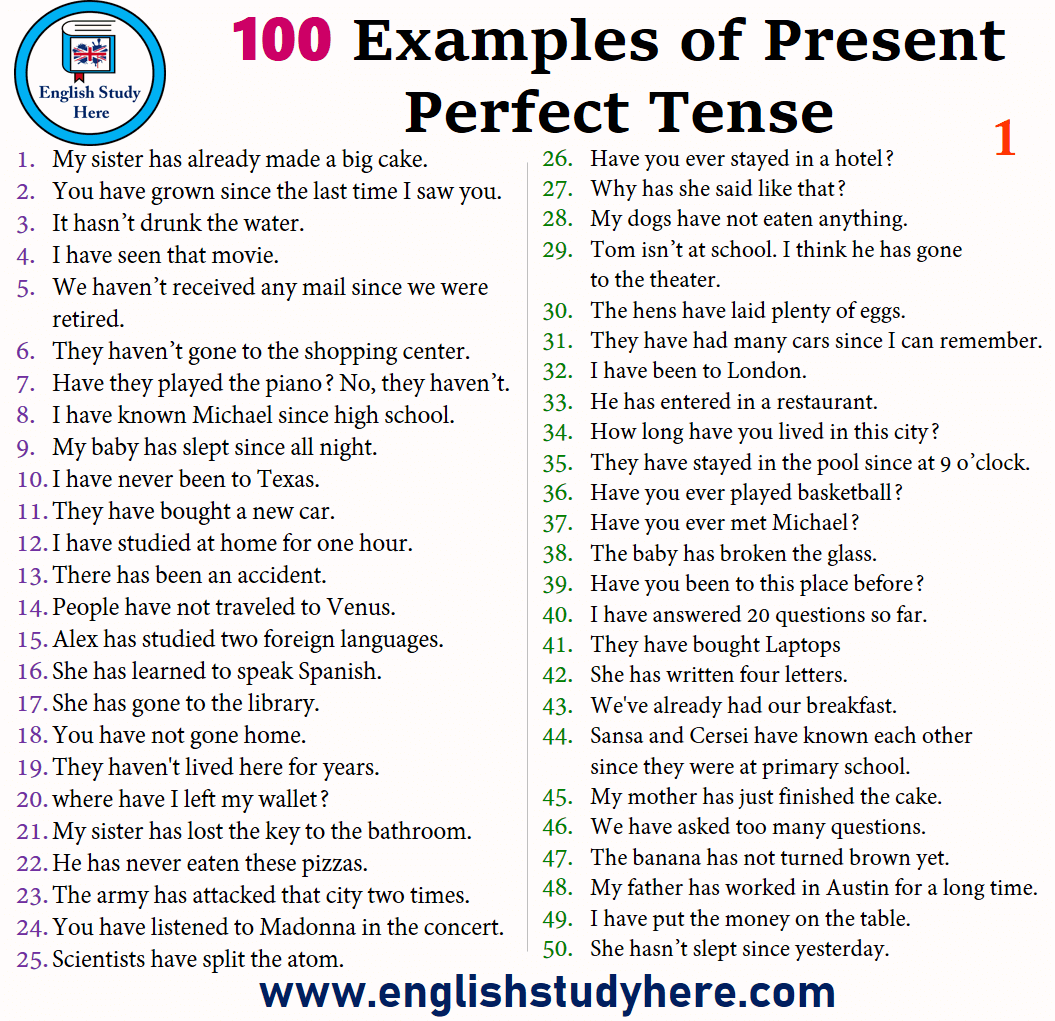



100 Sentences Of Present Perfect Tense Examples Of Present Perfect Tense English Study Here




Present Perfect Tense English Esl Worksheets For Distance Learning And Physical Classrooms




Present Perfect Tense With Key Fully Editable English Esl Worksheets For Distance Learning And Physical Classrooms
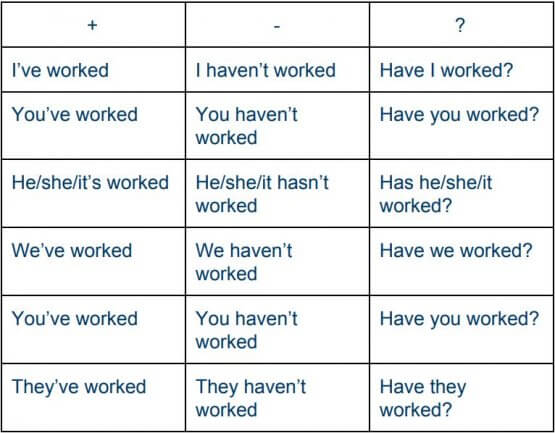



Using The Present Perfect Tense In English Wall Street English
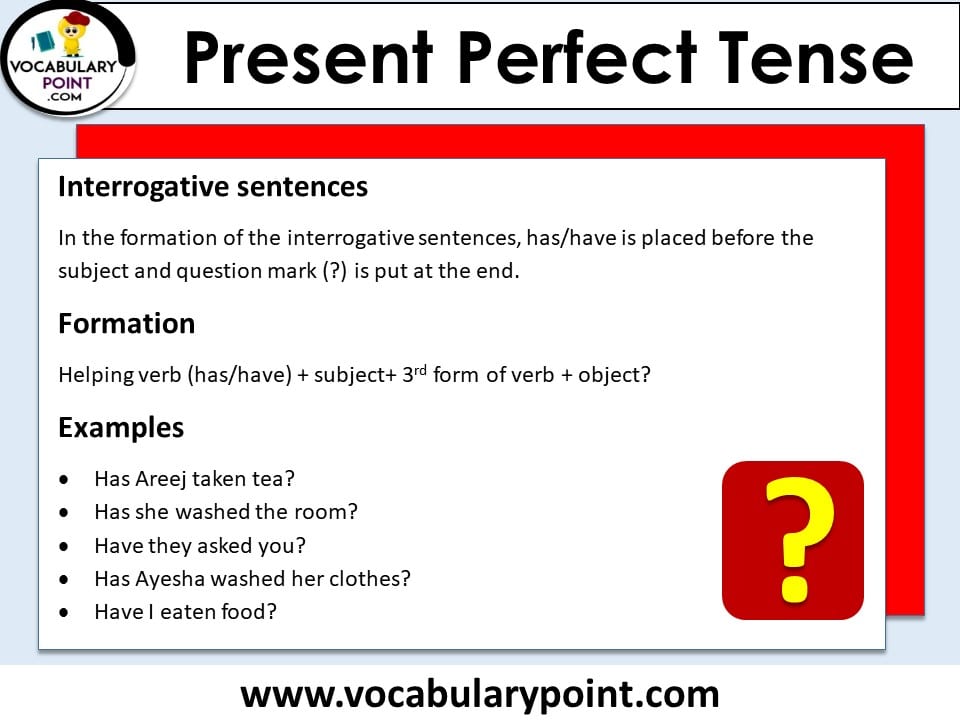



Present Perfect Tense Examples Sentences Formation Vocabulary Point




Present Perfect Tense Definition Uses Examples Sentences
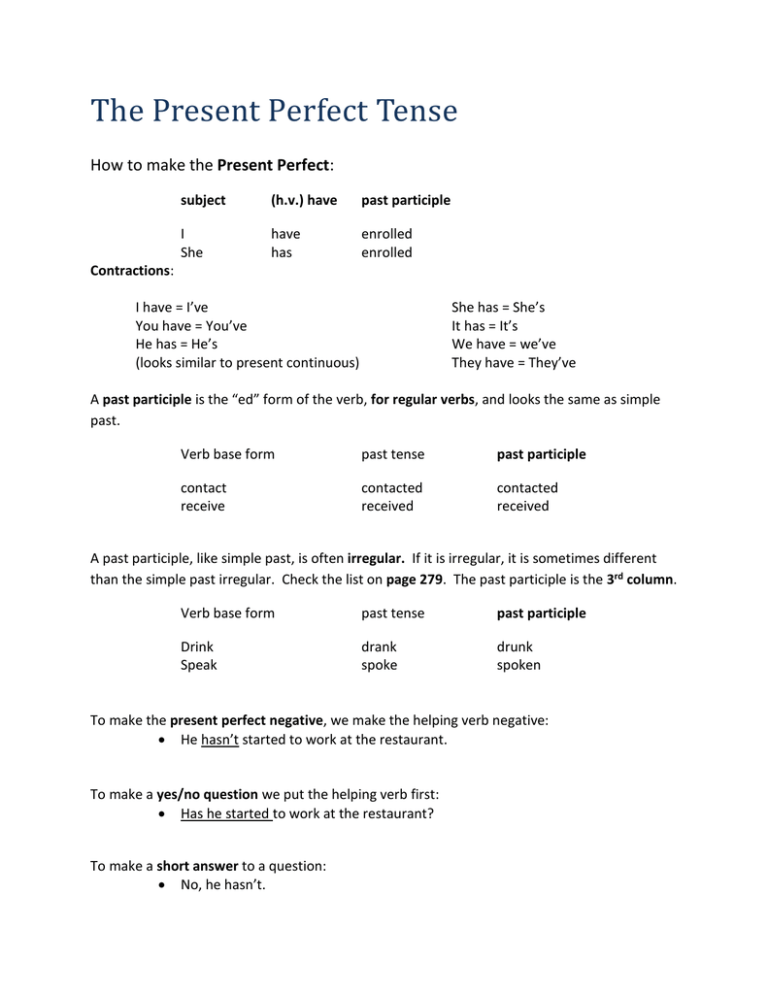



The Present Perfect Tense Present Perfect




Present Perfect Tense Practice 1 Worksheet




Present Tense Verbs With Present Perfect Tense Basics




The Present Perfect Tense English Lessons 6 Ex The Present Perfect Tense Complete The Sentences Using The Past Participle Of The Verbs In Brackets The Train Has We Can Pdf Document
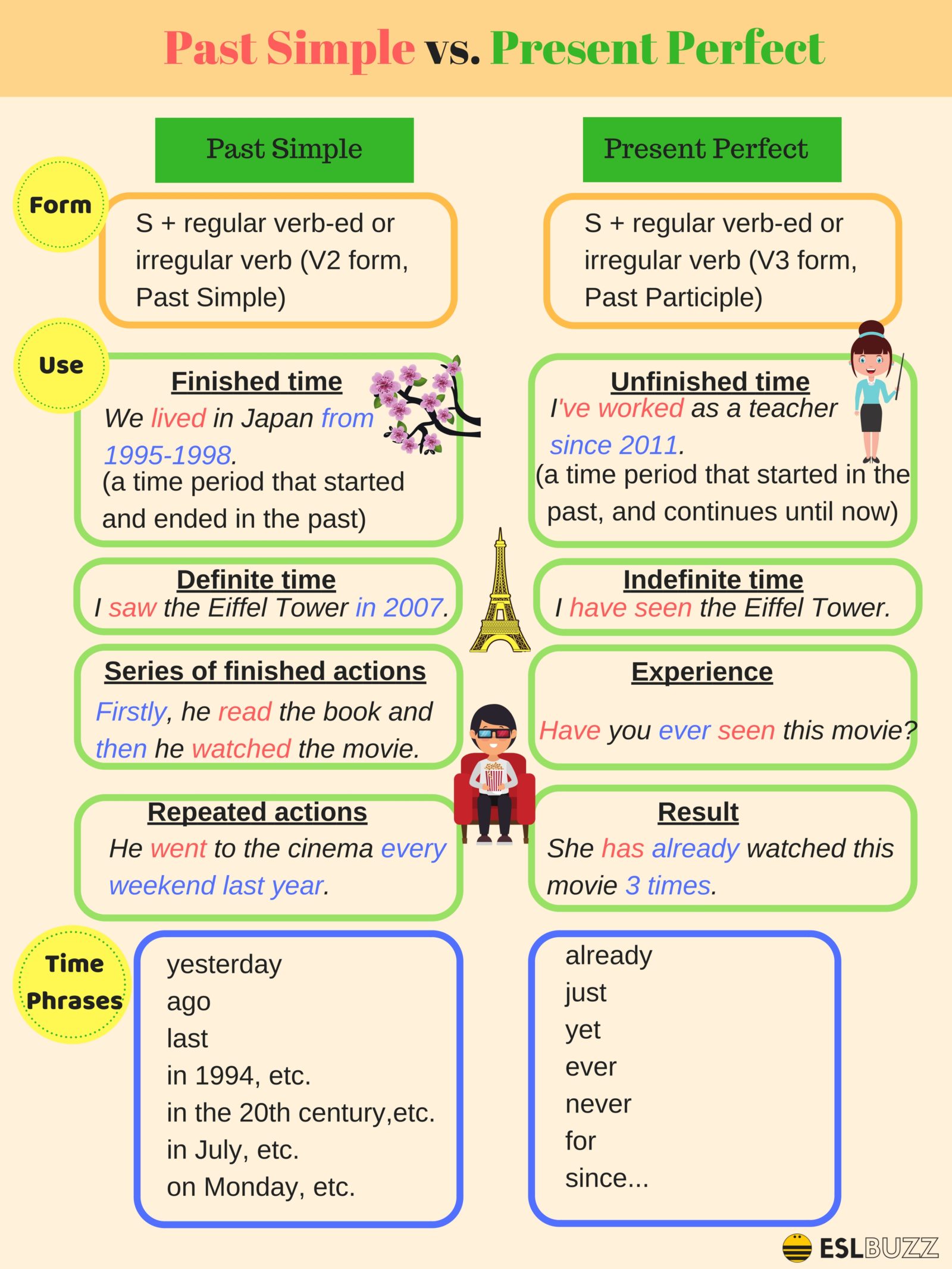



English Tenses Past Simple And Present Perfect Eslbuzz Learning English




How To Connect English Irregular Verbs To The Present Perfect Tense




Present Perfect Tense Cmo Se Dice En Espaol
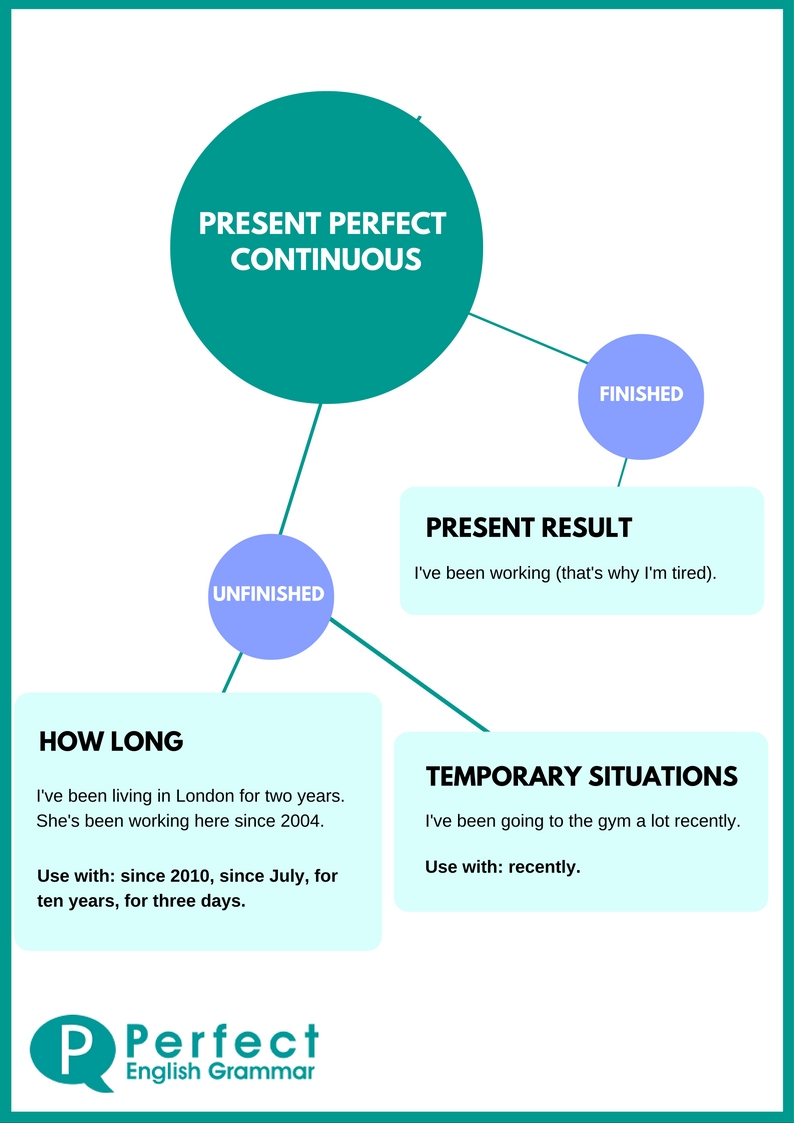



Using The Present Perfect Continuous Or Progressive
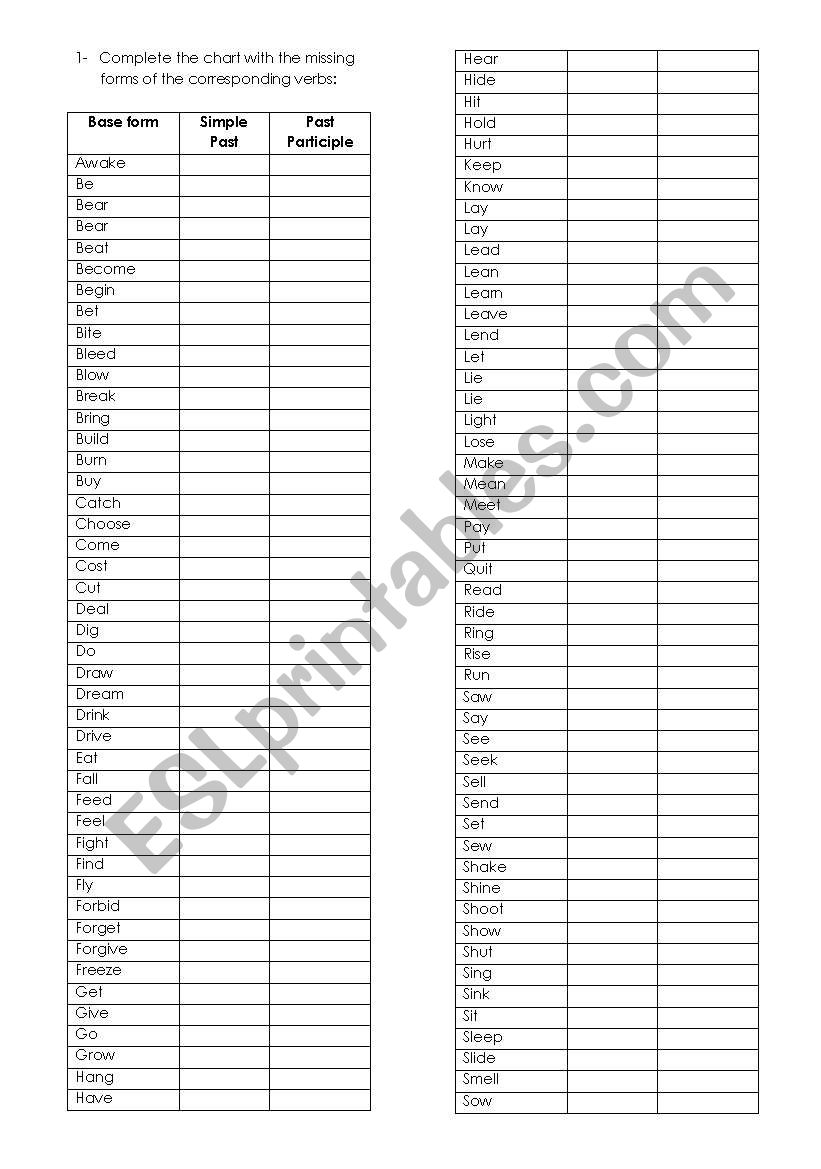



Present Perfect Past Participle Of Irregular Verbs Esl Worksheet By Erickvt91




Examples Of Present Perfect Tense Or Sentences Onlymyenglish




The Present Perfect Tense German Strong Verbs Youtube
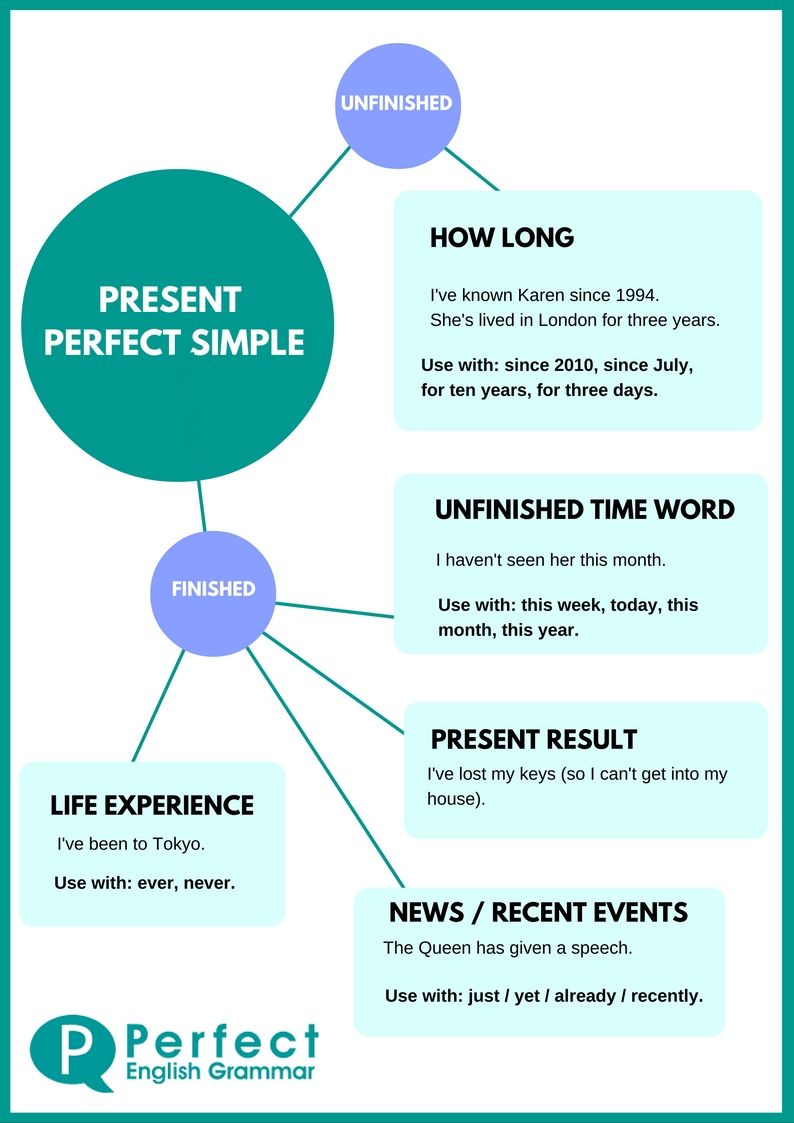



Using The Present Perfect Tense In English




Perfect Tense Verbs Anchor Chart Verbs Anchor Chart Perfect Tense Verb




Present Perfect Tense Slideshow
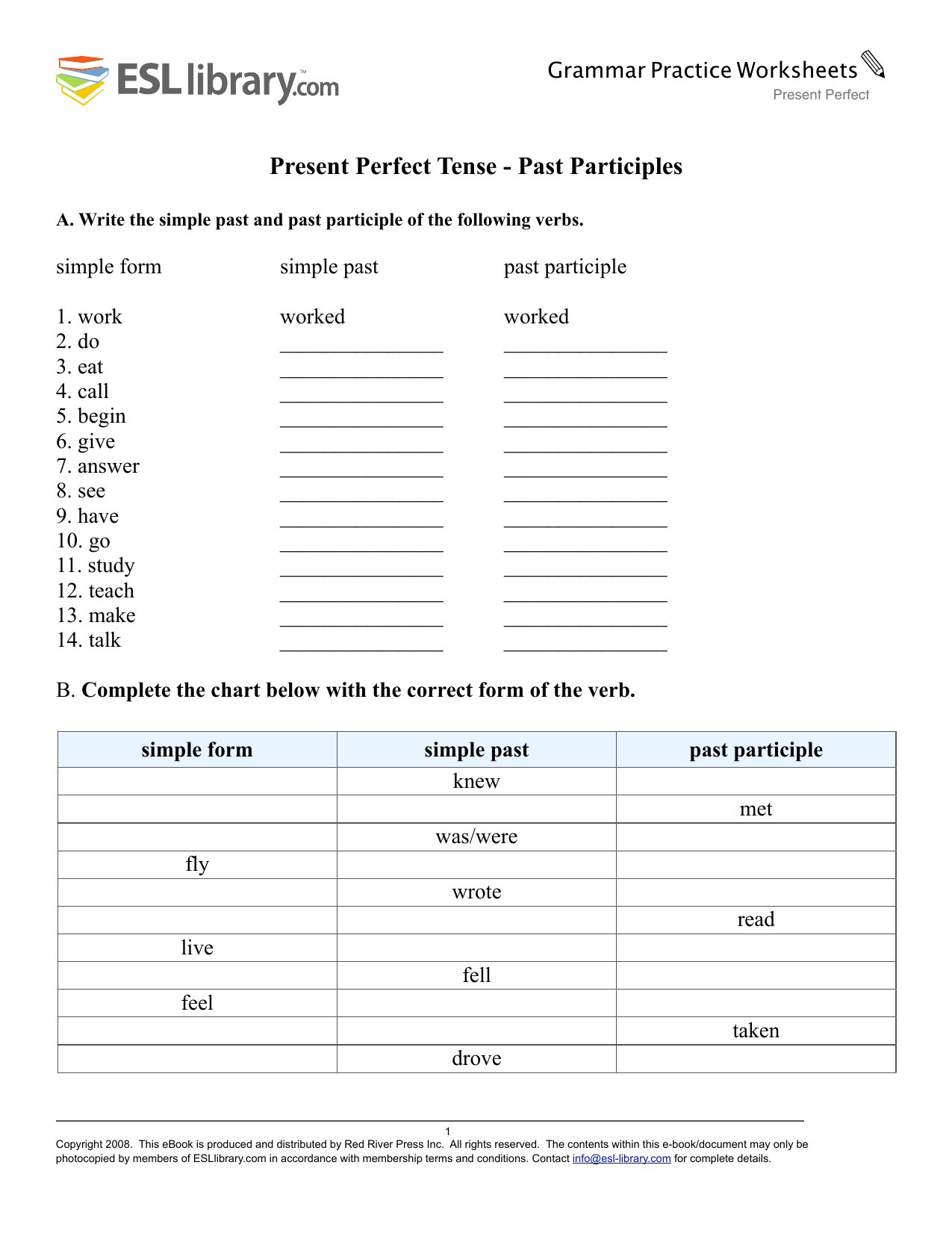



7 Present Perfect




Topic Present Perfect Tense Lesson Goal Students Will Be Able To Learn And Use Present Perfect Tense Ppt Download
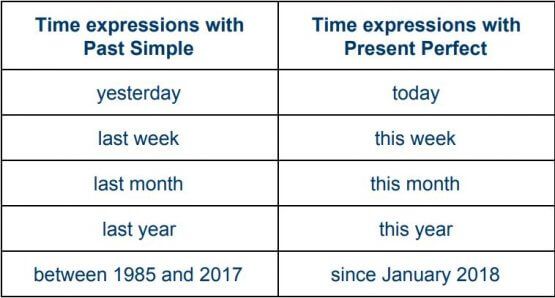



Using The Present Perfect Tense In English Wall Street English
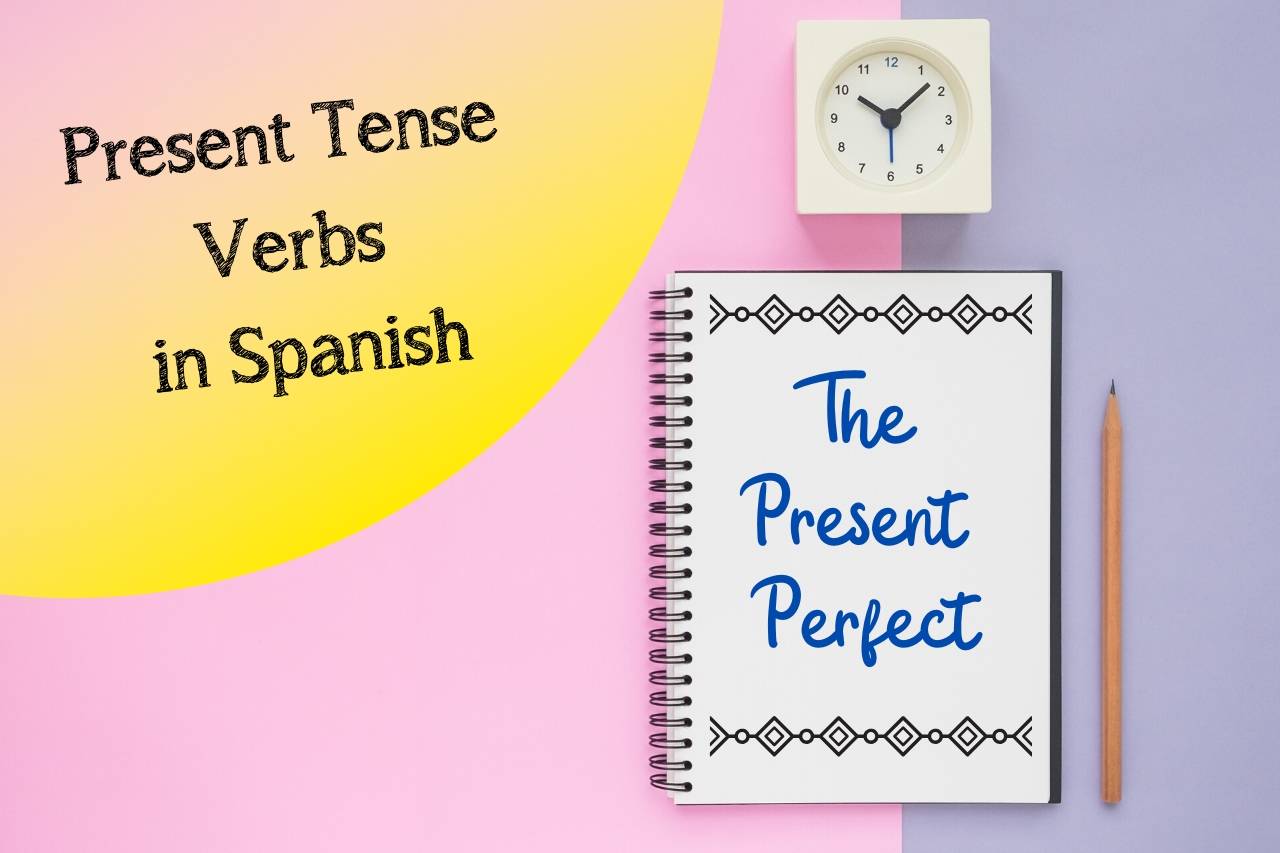



Present Tense Verbs In Spanish Part 3 The Present Perfect Tense




Selfaccess Learning Topic Present Perfect Tense Level P




Pdf Irregular Verbs Simple Present Simple Past And Present Perfect Tenses Duvan Smith Academia Edu




What Are The Present Perfect And The Past Perfect Theschoolrun




Present Perfect Tense Exercises 2
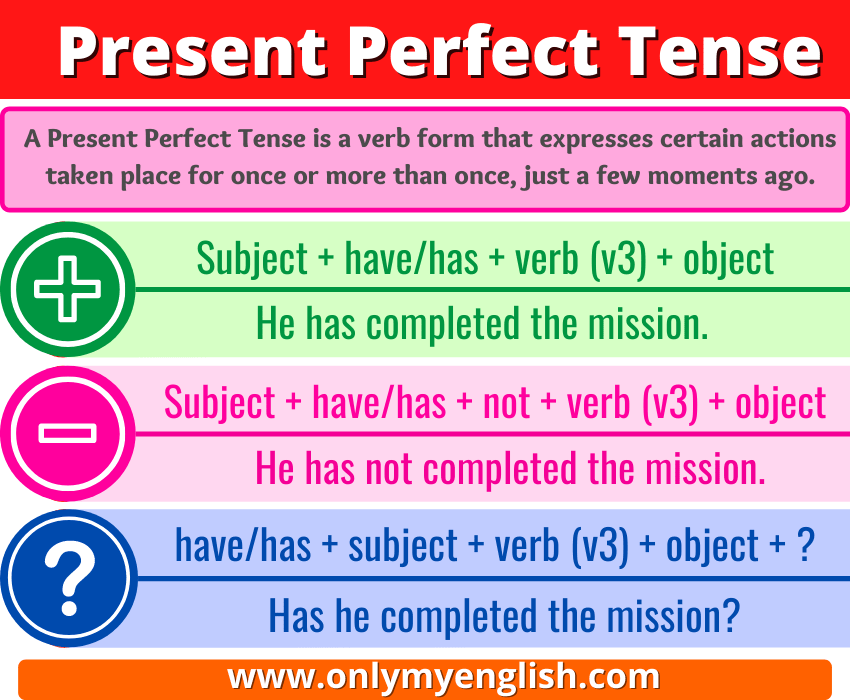



Present Perfect Tense Definition Examples Rules Onlymyenglish
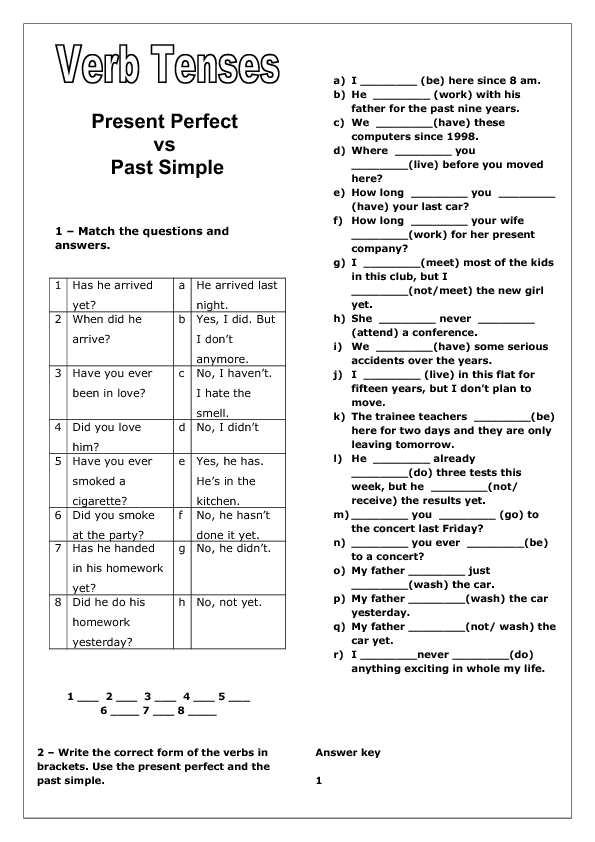



Verb Tenses Present Perfect Vs Past Simple Worksheet




Auxiliary Verbs Have Has Present Perfect Tense Worksheet




Present Perfect Tense Elementary Worksheet




Formation Of Tense With Verb Go In Present Perfect Tense Youtube
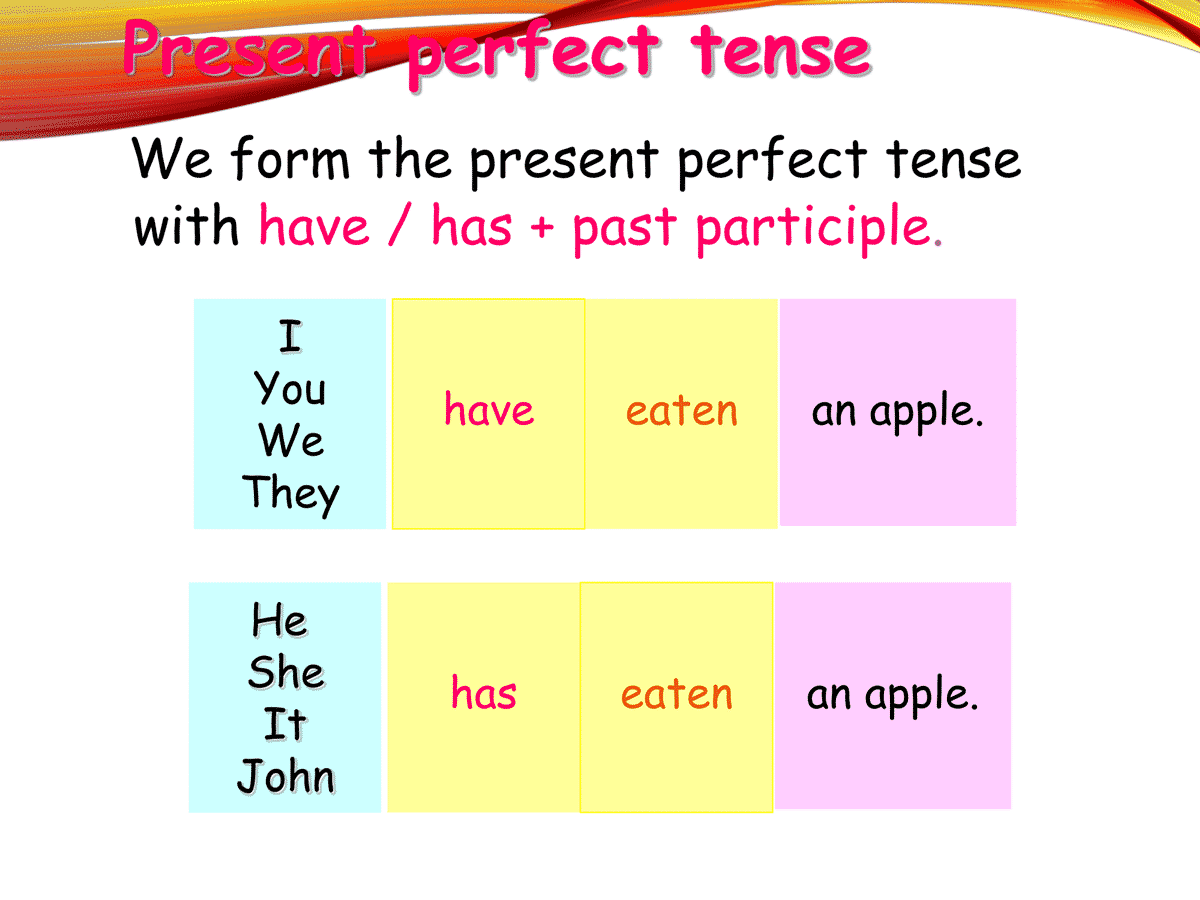



Using The Present Perfect Tense In English Eslbuzz Learning English




Unit 18 Present Perfect Tense Vs Past Tense
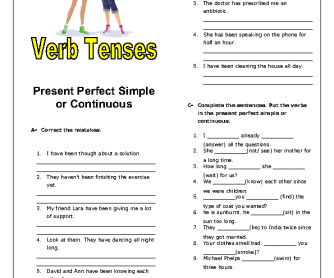



Verb Tenses Present Perfect Simple Or Continuous



1




Selfaccess Learning Topic Present Perfect Tense Level P



Category Present Perfect Tense My Mfl Box




101 English Grammar Worksheets For English Learners By Billgreen54 Issuu




Present Perfect Tense
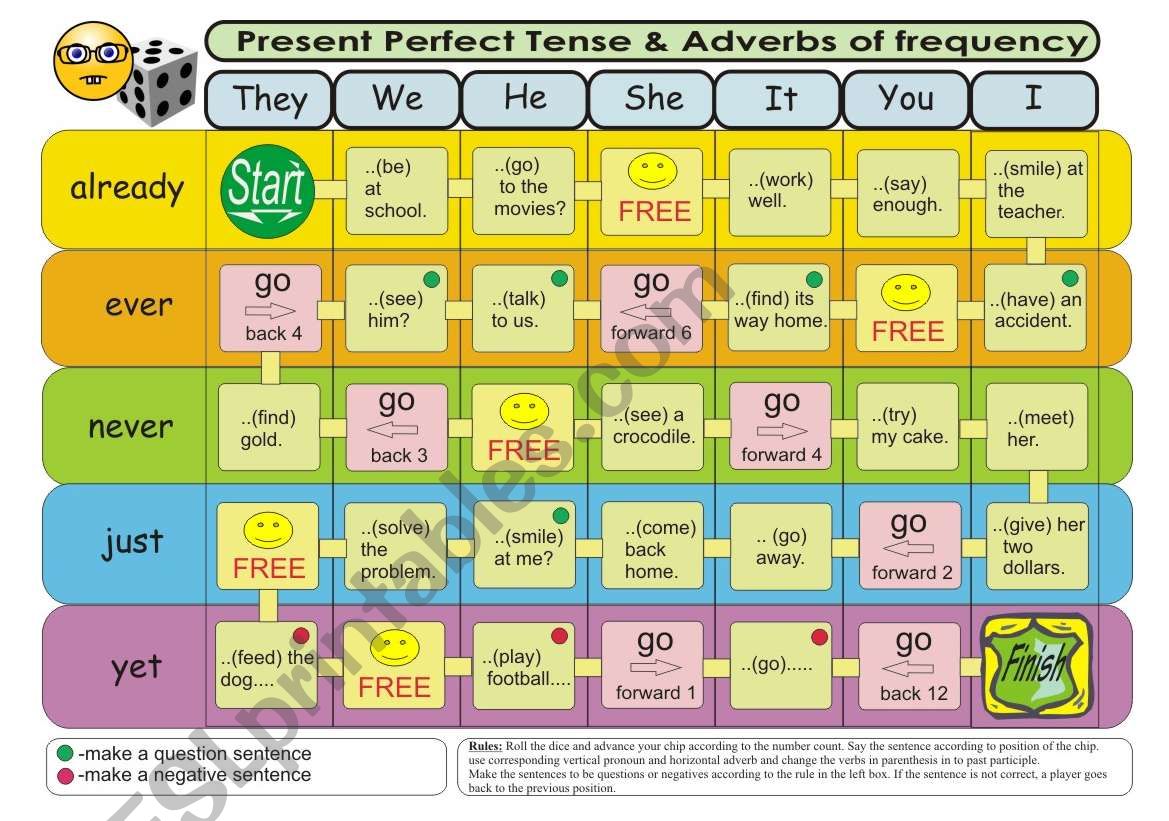



Present Perfect Tense Adverbs Of Frequency Board Game 2 Level 2 Verbs In Base Form Esl Worksheet By Andre3lion



1




The Present Perfect With Irregular Verbs List Full Explanation English Esl Worksheets For Distance Learning And Physical Classrooms



Smart Kit Present Perfect Tense E K



Present Perfect Continuous Tense The Nature Of Writing




Verb Tenses Present Perfect My English Printable Worksheets
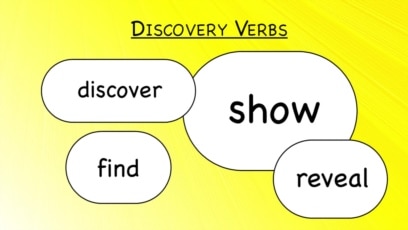



Everyday Grammar Discovery Verbs Present Perfect Tense




Structure Of Present Perfect Tense English Study Page




Present Perfect Verbs And Tenses
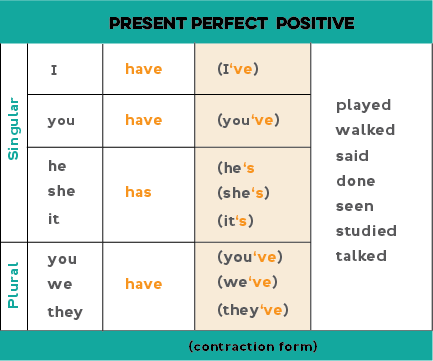



Present Perfect In English




Resultado De Imagen De Present Perfect Tense Verbs Perfect Tense Present Perfect Activities For Teens




The Present Perfect Tense Tenses English Present Perfect Tense Exercises Present Perfect



1
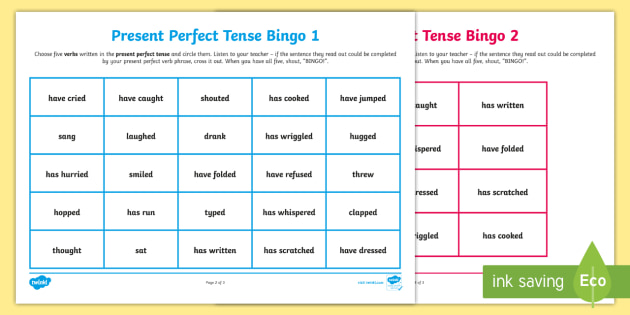



Present Perfect Tense Bingo
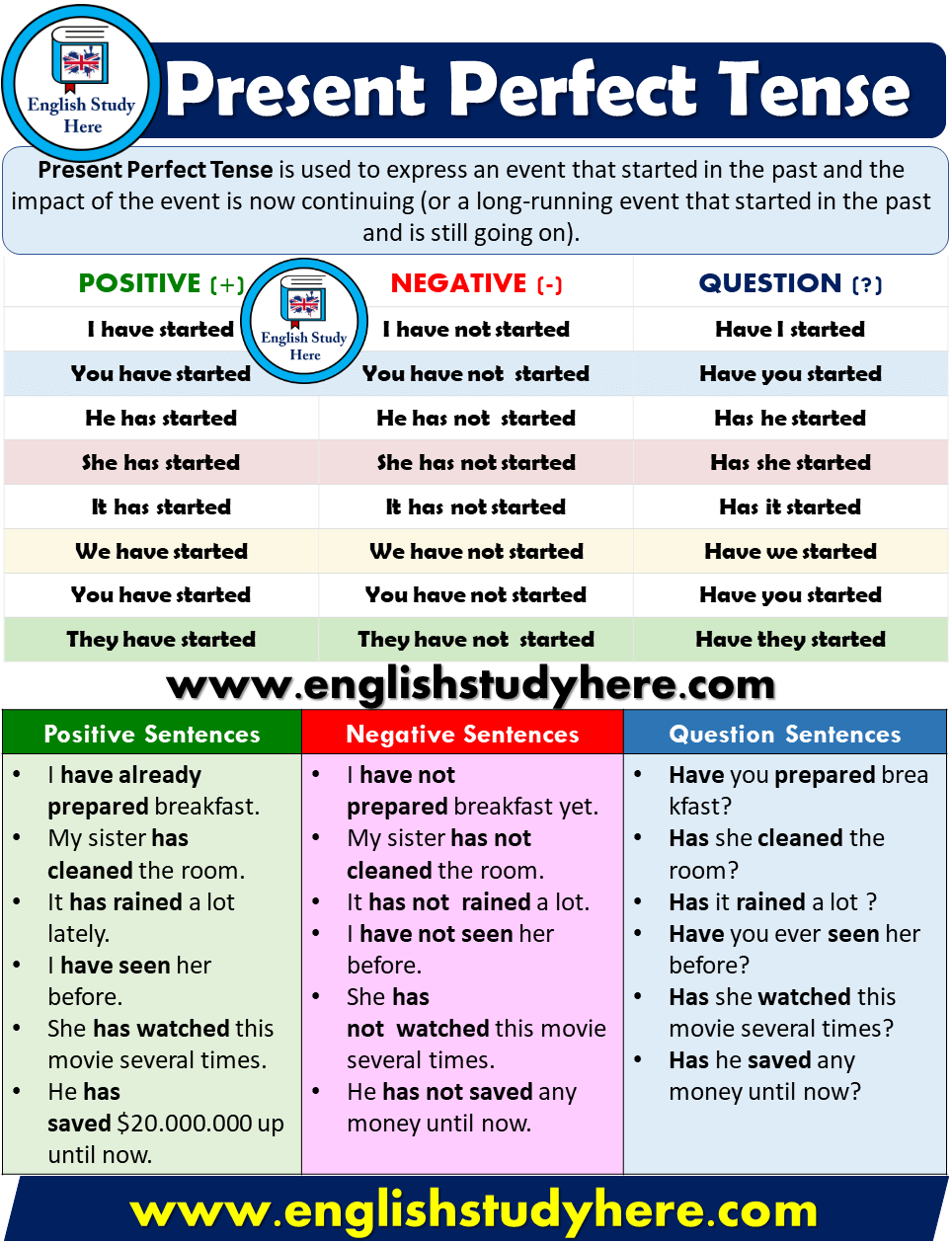



Present Perfect Tense Detailed Expression English Study Here
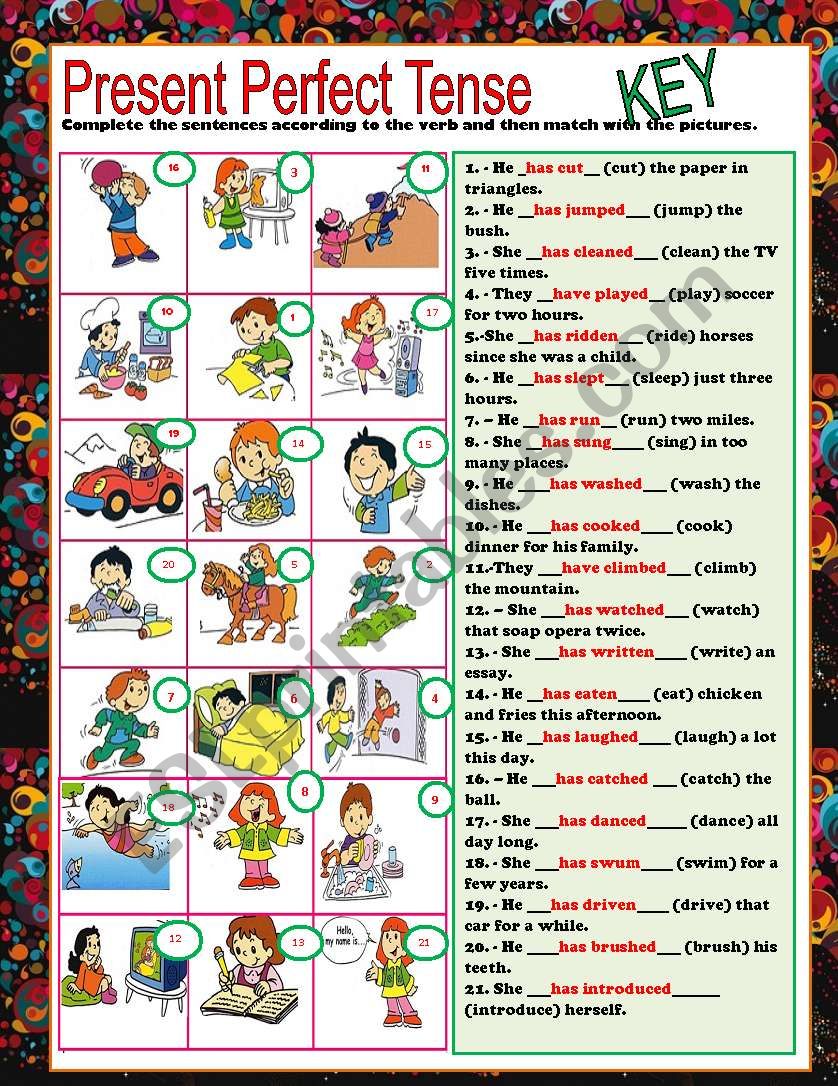



Present Perfect Tense Answer Key Esl Worksheet By Rukiak
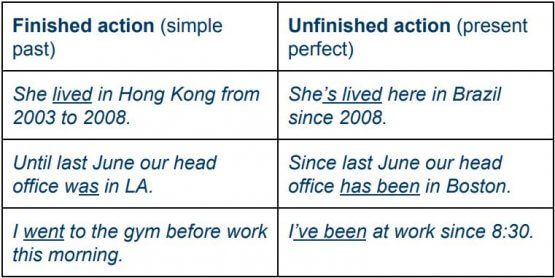



Using The Present Perfect Tense In English Wall Street English
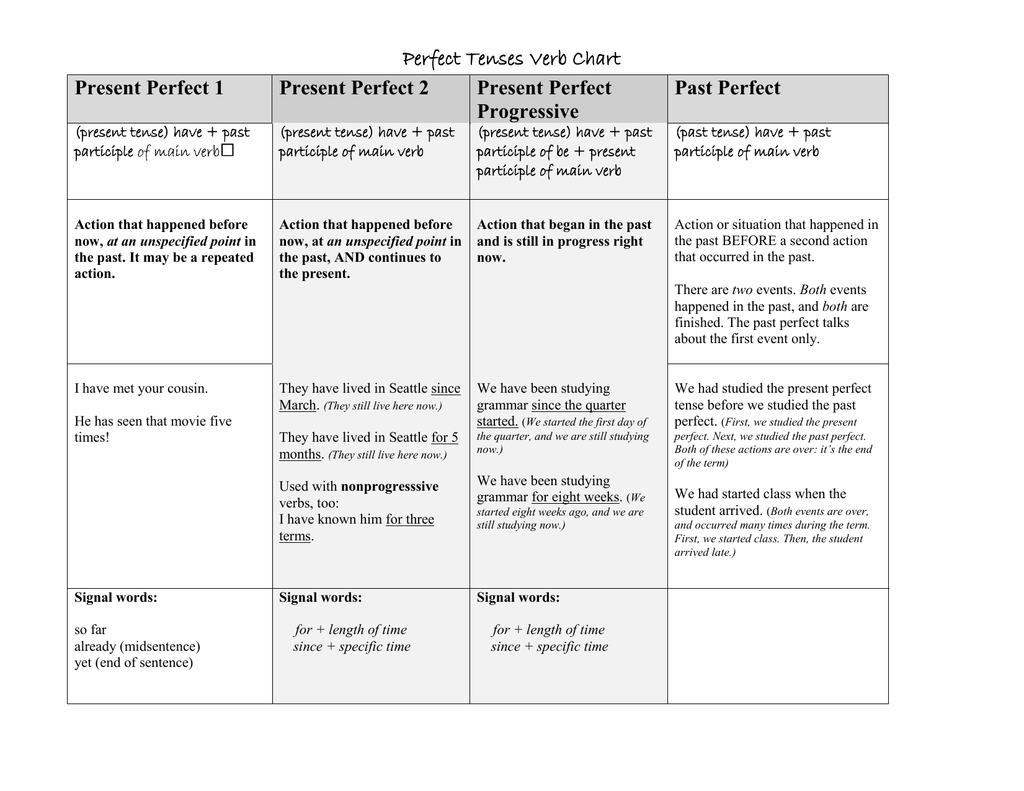



Perfect Tenses Verb Chart Present Perfect 1 Present Perfect 2



Present Perfect Tense Games To Learn English Games To Learn English
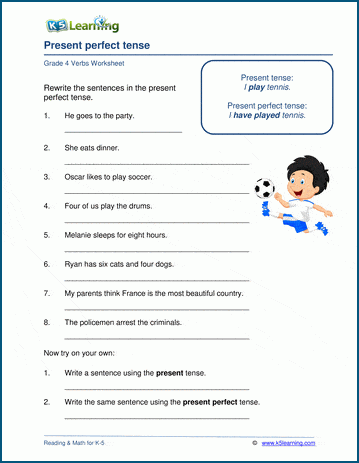



Present Perfect Tense Worksheets K5 Learning




Web Viewand The Past Participle Form The Present Perfect Tense Of The Following Three Verbs




Present Perfect Tense Definition Useful Examples And Exercise Esl Grammar




English Esl Present Perfect Irregular Verbs Worksheets Most Downloaded 1 Result
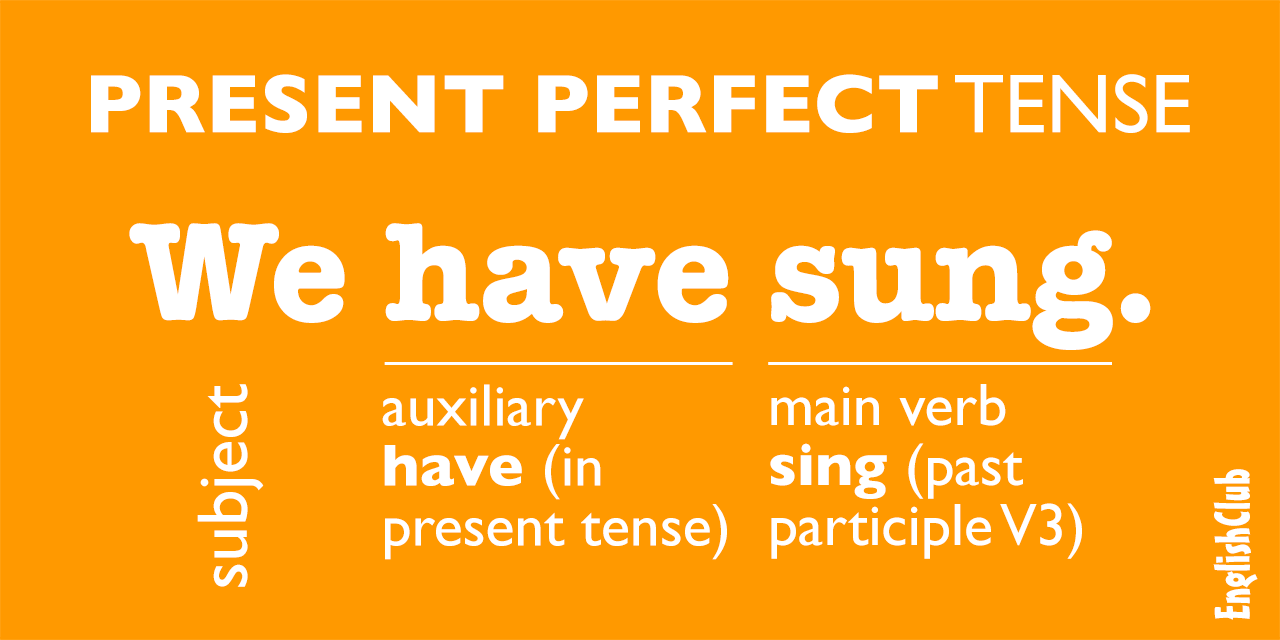



Present Perfect Tense Grammar Englishclub




Board Game Irregular Verbs The Present Perfect Tense English Esl Worksheets For Distance Learning And Physical Classrooms
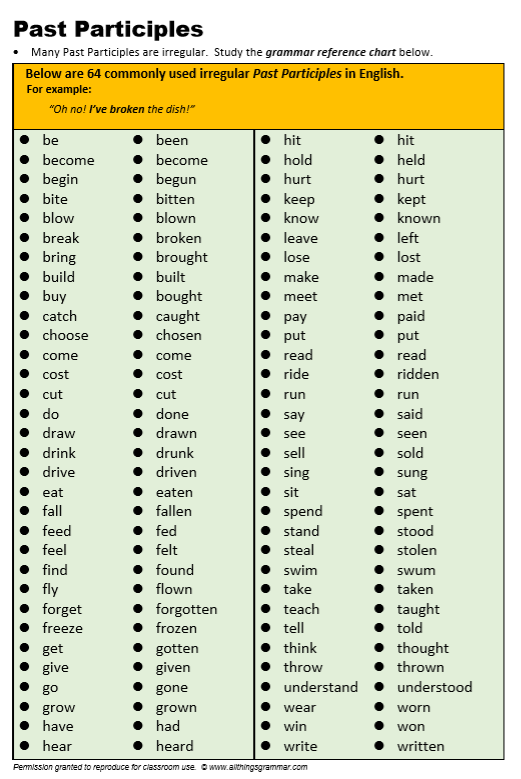



Present Perfect Simple All Things Grammar




Name Enses Verb Present Perfect Prefect Tense The Present Perfect Verb Tense Is The Past Participle
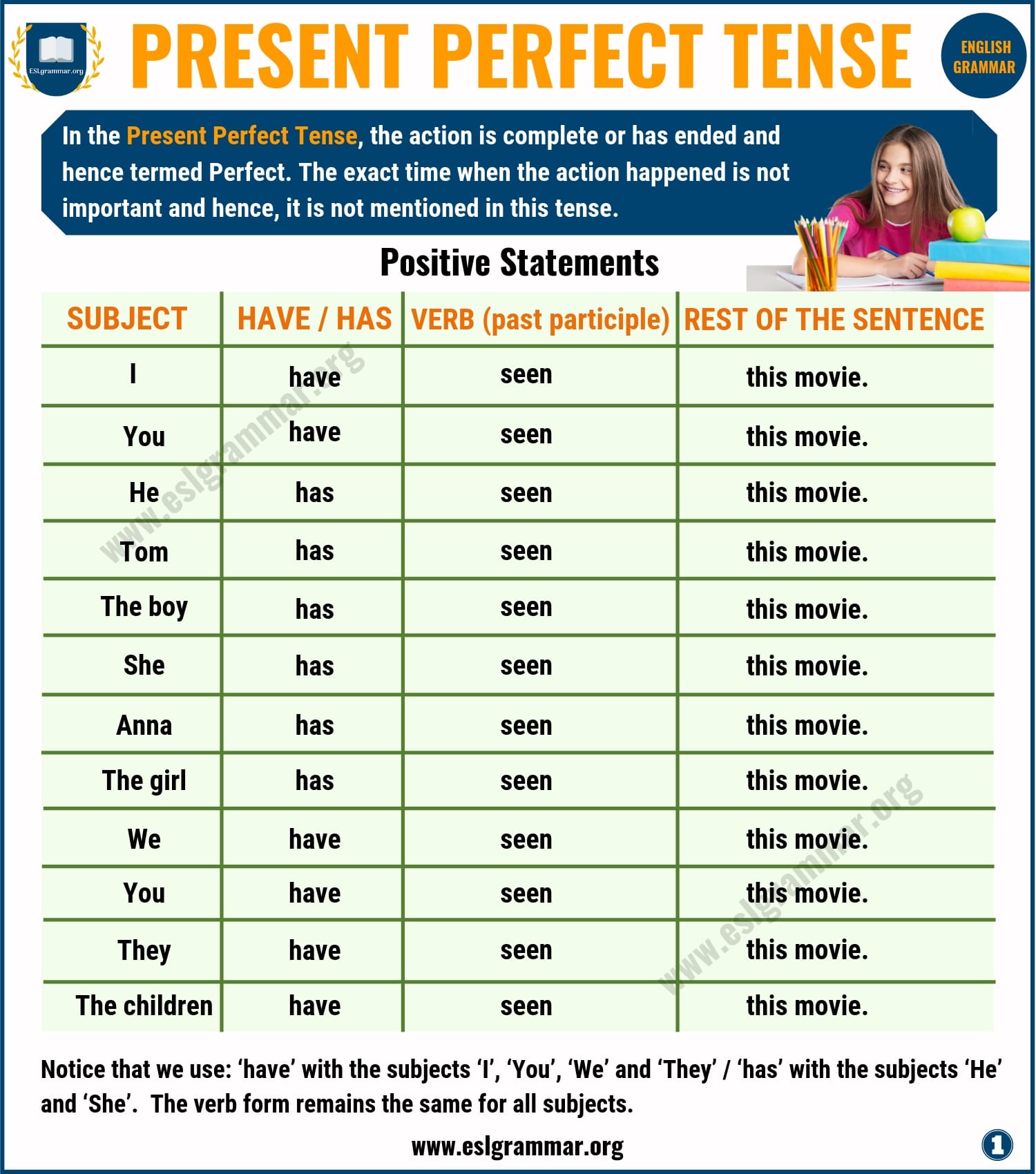



Present Perfect Tense Definition Useful Examples And Exercise Esl Grammar
コメント
コメントを投稿